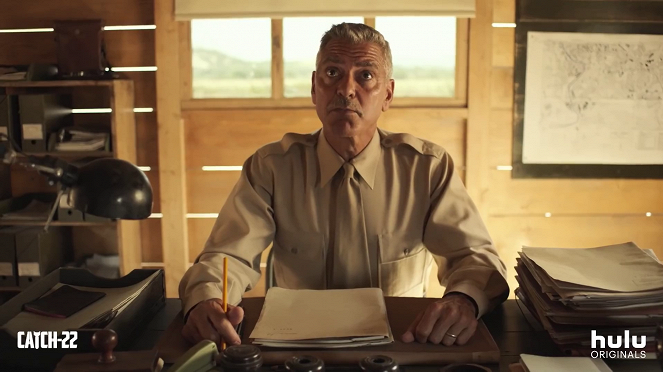Cinematography:
Martin RuheCast:
Christopher Abbott, Kyle Chandler, Rafi Gavron, Graham Patrick Martin, Lewis Pullman, Austin Stowell, Pico Alexander, Jon Rudnitsky, Gerran Howell (more)Episodes(6)
Plots(1)
Based on Joseph Heller's seminal novel of the same name, Catch-22 is the story of the incomparable, artful dodger, Yossarian (Christopher Abbott), a US Air Force bombardier in World War II who is furious because thousands of people he has never met are trying to kill him. But his real problem is not the enemy, but rather his own army which keeps increasing the number of missions the men must fly to complete their service. Yet if Yossarian makes any attempt to avoid his military assignments, he'll be in violation of Catch-22, a hilariously sinister bureaucratic rule which specifies that a concern for one's own safety in the face of dangers which are real and immediate is the process of a rational mind; a man is considered insane if he willingly continues to fly dangerous combat missions, but a request to be removed from duty is evidence of sanity and therefore makes him ineligible to be relieved from duty. (HBO Europe)
(more)Reviews of this series by the user Dionysos (1)
Catch-22 (2019)
Repetition to the new, or a direct route to always the same thing? A clear example, obviously escaping the authors: the original book logo MaM changes to MM in the miniseries, and in this difference everything is contained - the illusory conjunction & created internal differentiation and the appearance that two M's are something different than the single person Milo Minderbinder, who stands behind all the business: we thus had sameness that differentiates itself from itself and creates something new, a constantly expanding world within a world, a circular economy from M to M with the symbol &, full of twists and circularity of time. In contrast, MM connected by a common vertical line where one M ends where the other begins refers to unidirectional verticality of time, also known as linearity of time and storytelling, which in the case of American TV series, Netflix series, Apple TV products, HBO miniseries, and Hollywood films is always the same, an eternal return of the same narrative pattern, visual and narrative clichés, and with it, the smoothed contents that are so contrary to the very basic building block of the book source that this cannot be reflected, as it is not a legitimate change (because any adaptation from a book to a film is always perceived by the original readers as simplification/distortion, etc., which is not the case with this rape of the basic narrative structure itself), but it is political, ideological, and Artistic with a capital A, against which one must fight always and everywhere and by all means!
()

